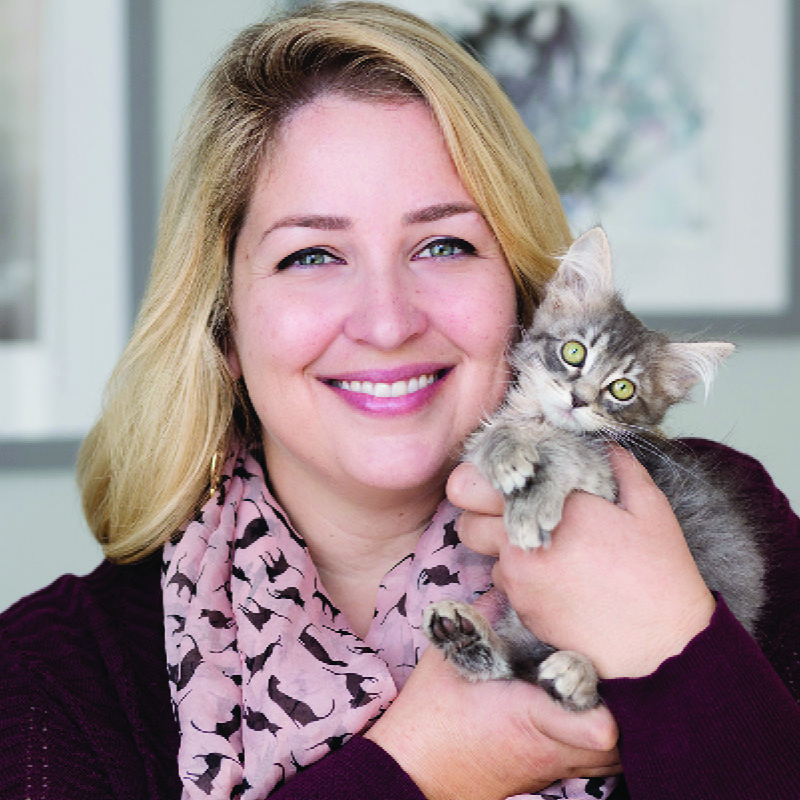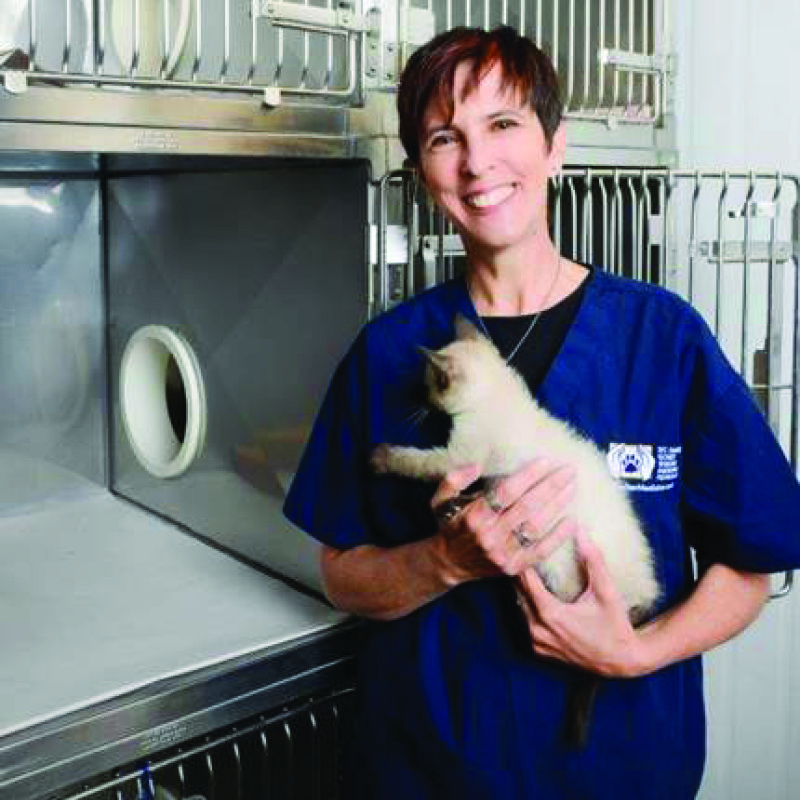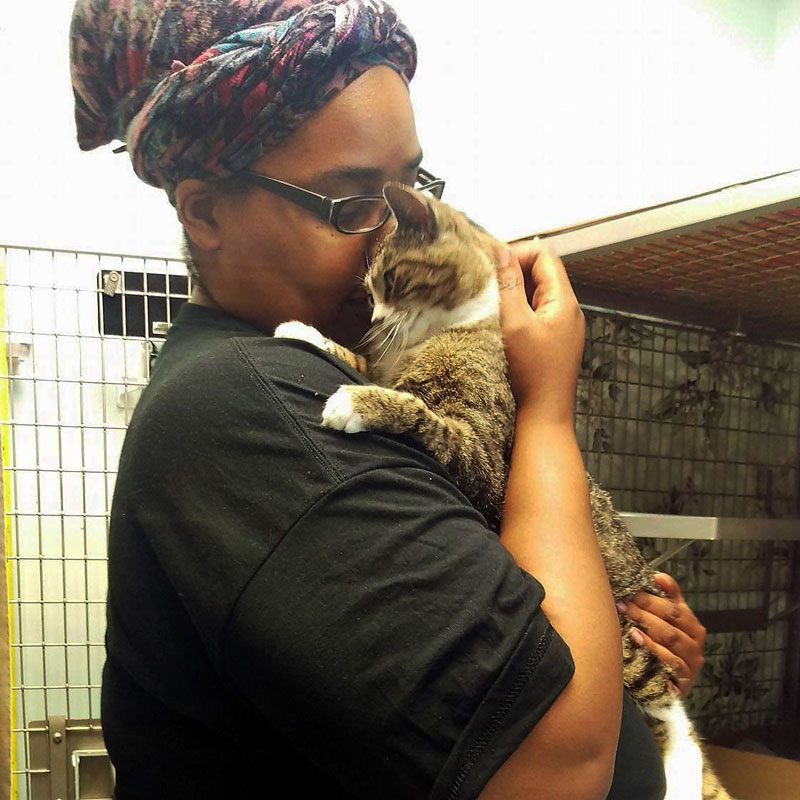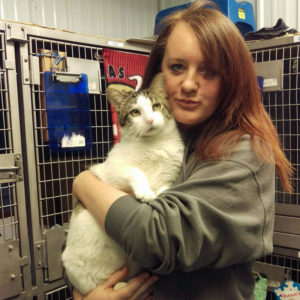
Interview! Nikki Martinez, Trapper, Foster Mom, and Feline Welfare Activist
April 6, 2019
Interview! Kate Hurley, DVM, Director of U.C. Davis Koret School of Veterinary Medicine and Co-founder of Million Cat Challenge
April 13, 2019
Here’s the next installment in our ongoing series on Feline Leukemia (FeLV) adoption programs around the country. The series shares different groups’ answers to our questions about their FeLV+ adoption programs.
We hope you enjoy and are inspired by this series, and if you have a suggestion for an organization we should consider profiling, please shoot me an email.
For this profile, we’re talking with Teresa Johnson, CEO/Executive Director & Chief Lifesaving Officer at the KC Pet Project in Kansas City, Missouri.
Why and when did you start a FeLV adoption program?
 The Kansas City Pet Project’s existing shelter, built in Kansas City, Missouri in 1972, was never intended to be an animal shelter. It was originally constructed to house construction equipment used to build the Kansas City Chiefs’ football stadium. Once that project was completed, city officials decided to convert the building into Kansas City’s only open-admission municipal “dog pound.” It was a “catch-and-kill” style facility with all homeless pets housed together in one loud room, located in a remote location in the city, in a flood plain, and adjacent to a former landfill. Euthanasia rates of 60–70% for the overall animal population and 90% euthanasia rates for cats were the norm as recently as 2009. Our non-profit organization, KC Pet Project, took over the operations of our city’s municipal animal shelter in January 2012, and within just a few months, we were already saving more than 90% of all the cats and dogs arriving.
The Kansas City Pet Project’s existing shelter, built in Kansas City, Missouri in 1972, was never intended to be an animal shelter. It was originally constructed to house construction equipment used to build the Kansas City Chiefs’ football stadium. Once that project was completed, city officials decided to convert the building into Kansas City’s only open-admission municipal “dog pound.” It was a “catch-and-kill” style facility with all homeless pets housed together in one loud room, located in a remote location in the city, in a flood plain, and adjacent to a former landfill. Euthanasia rates of 60–70% for the overall animal population and 90% euthanasia rates for cats were the norm as recently as 2009. Our non-profit organization, KC Pet Project, took over the operations of our city’s municipal animal shelter in January 2012, and within just a few months, we were already saving more than 90% of all the cats and dogs arriving.
Despite our facility, Kansas City Pet Project has built a national reputation for innovative lifesaving. We continue to look for ways to increase our lifesaving capacity for cats in our care and are currently saving more than 96% of the 4,000 cats that arrive annually at our municipal shelter by employing the most progressive lifesaving programs, including a feline foster program, a feline training and behavior team, a bottle baby squad for neonatal kittens, an in-house panleukopenia ward, and our feline leukemia (FeLV) adoption ward.
Our organization’s motto is“Solutions, not Excuses.”We believe every life that arrives at our shelter deserves an opportunity to find a loving home. The cats and kittens that test positive for FeLV deserve no less from us. Our shelter is old, too small, and underfunded for the 10,000 animals that arrive each year from our community, but we never use those excuses as to why we can’t save a life. Our team, our volunteers, and our supporters are dedicated to doing all we can to save more lives—including the lives of cats with FIV and FeLV.
How many cats do you adopt out annually?
In 2018, we adopted out 82 FeLV cats, 85 FIV cats, and 7 FeLV/FIV cats. All adoption fees for FeLV cats are waived, but many adopters make a donation to help us continue to care for the other FeLV cats in our shelter.
Do you provide or cover veterinary care for the cats after adoption?
We offer free end-of-life care and no-cost or low-cost veterinary support through our shelter’s veterinary clinic for FeLV adopted cats that develop any symptoms or illnesses unrelated to their FeLV. This costs our organization very little to offer and gives adopters peace of mind that they have support if it’s needed.
What are the benefits of running such a program?
All of our programs and services at Kansas City Pet Project are focused on how to save more lives in our community (and how to help other communities save lives, too). In fact, we have been so successful at finding homes for FeLV cats that we have been able to help other shelters with FeLV cats (as space and adoptions allow).
Our feline care staff and volunteers are well educated on the virus and I believe we do a great job educating potential adopters. We don’t sugar coat it, nor do we dramatize it. We just give them the facts and let them decide if the cat is the right fit for them. No pressure, no pushing, no promises on how long they will have. Many adopters come to the shelter having no other cats, or are looking to add a single cat to their household and are great candidates for a FeLV cat. We even have repeat adopters who have adopted one FeLV cat and come back to add another FeLV cat to their home. Other great candidates for FeLV cats are students or young professionals who may not be able to fully commit 18–20 years to a cat, but love cats and want to give a loving home to a cat for several years.
What are the challenges?
I believe the challenge is just that we don’t have enough shelters across the country with staff that are educated on FeLV and how to talk to potential adopters about the virus.
How can people contact your organization for more information?
You can contact Kansas City Pet Project through our website at www.kcpetproject.org or contact me directly at teresa.johnson@kcmo.org.




